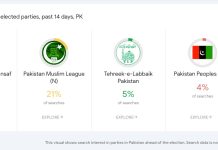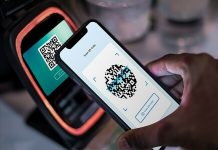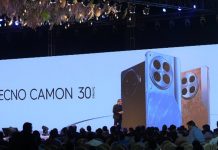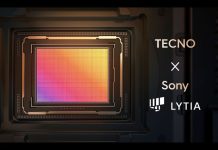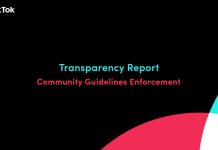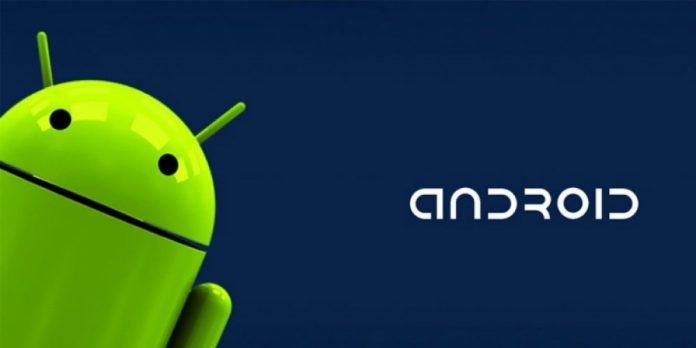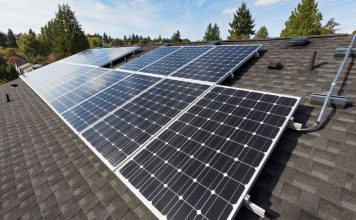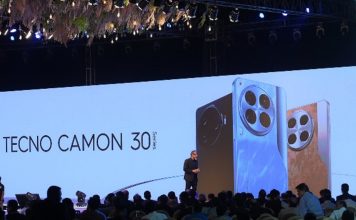Android 14 is the next major release of Android. While Google’s mobile operating system has reached a certain maturity, we’re always excited to see the new features and interface changes that come with a major update in new release date. Of course, the update also comes with its share of security fixes and bugs as well as optimizations that further improve the experience on smartphones and tablets.
After a year of transition with Android 13, a version which will have mainly consolidated the bases laid by Android 12 in terms of interface via the Material You design, Google is working on the development of Android 14 . This update shouldn’t offer as profound a shake-up as Android 12, but rather follow in the footsteps of Android 13 by offering UI improvements, new features and optimizations without revolutionizing the experience too much. But we still expect many new features with this major version of Android .
Internally, the nickname given to Android 14 is Upside Down Cake , which means upside-down cake in French. As has been the tradition since the beginnings of the mobile operating system, each update is decked out with a name of dessert, and we go down a letter of the alphabet each time. For example, Android 13 was Tiramisu, Android 12 is known as Snow Cone, and Android 11 is known as Red Velvet Cake. But since Android 10, Google has stopped using these names in its communication and marketing, the dessert names then being reserved for its teams and not for the general public. So better remember that the next big update brings us Android 14 and not Upside Down Cake.
WHEN WILL ANDROID 14 BE AVAILABLE?
Except for Android 12, whose development was disrupted by the Covid-19 pandemic and which was a few weeks late, the release of a major version of Android always takes place in the third quarter of the year . Specifically, we can expect the stable version of Android 14 to launch sometime between late August and early September, around Labor Day in the US (which is the first Monday in September). .
But we’ll get first glimpses of the update well before then. From February, Google should make available the first developer preview of Android 14 , a version that is not designed for the public, but for developers who offer applications and services on the mobile OS. It is from this moment that we will have a precise idea of the new features integrated into Android 14. Other developer previews will follow, then beta versions.
Traditionally, Google launches the first beta of its new versions of Android during its big annual Google I/O event, which takes place in May. But that could change in 2023. Google has confirmed that it will shorten software tracking on Android 13, which will end in March instead of June. This time saving could lead Google to accelerate its schedule and offer a beta as early as April . Beta versions can be installed by all users as long as they have a compatible smartphone. Bugs may remain and some features may not be available, but the experience approximates that of the stable release.
ANDROID 14 COMPATIBLE SMARTPHONES:
The manufacturers will communicate in due time the list of their smartphone models which will benefit from a passage to Android 14. What is certain is that the Google Pixel will be the first served and will kick off the official launch of the update. Pixels of the last three generations (series 7, 6 and 5) are guaranteed to receive Android 14. Series 3 Pixels and earlier devices will be deprived of it.
Regarding the series 4, we have to wait for an announcement from Google to have reliable information. Android version updates are guaranteed until October 2022 for the Pixel 4 and Pixel 4 XL, so the Mountain View firm has no obligation to make them compatible with Android 14. The Pixel 4a is covered until August 2023 and should thus narrowly pass, while the Pixel 4a 5G seems guaranteed to enjoy the new version since it is supported until November 2023.
Android smartphone makers are increasingly quick to roll out updates to the latest version of the operating system quickly, and to more smartphones. For example, Samsung now promises 4 years of Android updates and 5 years of security patches on its high-end mobiles (Galaxy S, Fold and Flip). Also, there’s less and less of a wait to receive the update, and Samsung could roll out Android 14 even faster to its smartphones in 2023. Brands like Xiaomi, Oppo, OnePlus, and vivo are also serious about the issue of software support.
We will tell you in this article which models precisely will be entitled to Android 14 as soon as the manufacturers have spoken on the subject.
If you have a compatible smartphone, you will receive a notification as soon as the update is available on your device. All you have to do then is accept to install it, and the whole procedure will be carried out automatically and seamlessly. If you want to participate in the beta program, you must register on the Google site (when it goes live) and choose the smartphone on which you want to try the beta. Then go to the phone’s update settings to download and install it.
ANDROID 14 NEW FEATURES:
Between information from Android Open Source Project (AOSP) commits, and then upcoming developer previews and betas, we don’t have to wait for the official stable release of Android 14 to get an idea. new features introduced by the update. Learn about the features Google is working on that should come to Android 14, along with the usual performance tweaks, minor interface changes, bug fixes, and security patches.
A NEW PREDICTIVE ROLLBACK GESTURE:
The APIs having been made available by Google, application developers for Android 13 can already test this new functionality, which should therefore be introduced with Android 14 if the feedback is conclusive. The predictive back gesture lets you preview the previous screen before swiping back to it. The user can thus avoid accidentally falling on a page or an application on which he ultimately does not wish to return.
Concretely, initiating the back gesture will remind the user which screen he is going to, giving him the chance to abandon the gesture along the way to cancel the return to the previous screen. This function is particularly useful on smartphones equipped with a foldable screen (that’s good, Google should just announce its Pixel Fold this year) but can also be effective on a classic mobile.
NATIVE AV1 VIDEO CODEC SUPPORT:
Several commits spotted in AOSP suggest that Google wants to force smartphone manufacturers to adopt the AV1 video codec with Android 14 . This would be added to the Video Codec Test of the Android compatibility testing procedure, which is used to determine if a device is eligible for the mobile operating system. If this is confirmed, new terminals wishing to ship Android 14 preinstalled and with Google services would be required to support AV1.
AV1 is a royalty-free video codec developed by the Alliance for Open Media, of which Google is one of the founding members and members. If the Mountain View firm would like more smartphones to support it (this is currently only the case with a few models), it is because this video codec is much more efficient than the most popular codecs currently, such as VP9. and the H264. The AV1 relies on superior compression technology that saves a large amount of bandwidth without degrading quality. A boon for the American group, owner of YouTube and which is necessarily very interested in a reduction in the bandwidth necessary for its video platform.
SATELLITE EMERGENCY CALLS:
Apple introduced satellite emergency calling with its iPhone 14 series . Android should soon follow suit. Android 14 will therefore offer satellite connectivity , but we don’t know much more about it at the moment. It is likely that at first few smartphones will be compatible with this feature. Maybe only the Pixel 8 will benefit from it at first. It is also possible that satellite communications are not immediately available in France. It will take time for Google to provide a good experience to a large number of users. But once this is the case, the promise of being able to contact the emergency services from anywhere without a telephone network is very attractive.
HEALTH CONNECT:
The Health Connect application is the joint work of Google and Samsung, which are collaborating on the WearOS connected watch system. Still in beta, it allows you to centralize your health, fitness and fitness data from other specialized applications, such as Fitbit, Google Fit or Samsung Health. Health Connect is also an API, and it comes natively on Android 14 for better integration of health features. This is great news as it means third-party manufacturers and developers will be able to take advantage of it as well, helping to create a more relevant Android health data ecosystem. This is enough to make up for the delay that Android has on iOS in terms of health.
NTFS FILE SYSTEM COMPATIBILITY:
The issue of support for external storage solutions (excluding microSD) on Android is often a tricky one. Last year, Google took a step forward with Android 13’s support for the exFAT file system, which notably allows, compared to the FAT32 standard, the management of files larger than 4 GB. Android 14 could go even further by authorizing the NTFS (New Technology File System), made available recently on Linux (on which Android is based) via the transition to kernel 5.15. This would make it easier to use a hard drive or USB flash drive on an Android device.
ANDROID BEAM, IT’S OVER:
Set aside for several generations, the Android Beam functionality will be permanently removed from AOSP with the Android 14 update. For the vast majority of users, this will have no impact since Nearby Share offers the same possibility of connecting two devices between them wirelessly to perform data transfers, and more.
The removal of Android Beam from AOSP will, however, be problematic for smartphone makers who rely on the open source version of Android without a Google license. Indeed, the Nearby Share option is not part of AOSP but is integrated into Google Mobile Services (GMS).
A brand like Huawei, for example, cannot claim supermarkets following the American sanctions against it. It is therefore deprived of Nearby Share, and therefore soon of Android Beam if it wants to upgrade its mobiles to Android 14. But let’s be reassured, nothing prevents manufacturers from developing their own Nearby Share type file transfer function or Android Beam. This is also the case on Huawei’s HarmonyOS. But quite often, compatibility and efficiency with Android smartphones from other brands are not optimal.
MORE DURABLE SMARTPHONES?
Due to the expiry of root certificates, old Android smartphones can be deprived of access to many secure websites in the absence of an OTA update deployed by the manufacturer to renew these certificates ( or adding new certificates). Since the beginning of Android, the management of these certificates is carried out at the level of the system partition of the mobile. A situation that had contributed to fears that smartphones running Android 7 or earlier could no longer access HTTPS sites using the Let’s Encrypt certificate authority from 2021, before a solution was finally found.
With Android 14, Google wants to change the way root certificates are administered to avoid this kind of disappointment. They will now be part of the Conscrypt Mainline module, which can be updated directly from the Google Play platform . There will therefore no longer be any need to wait for an OTA update from the manufacturer, which would probably never arrive given the limited support of smartphones over time.


